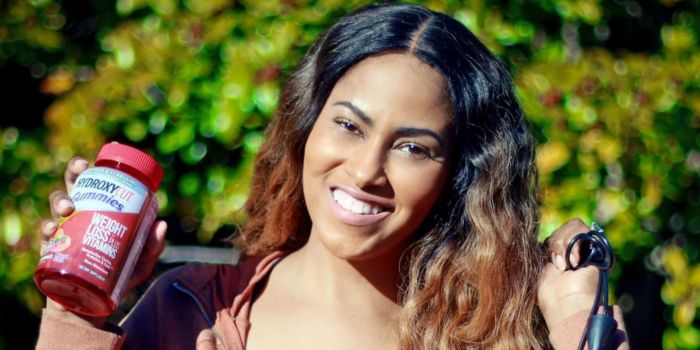As a registered dietitian I encounter clients on a regular basis who feel compelled to either trial going exclusively plant-based or work towards a more plant-based diet as a means to diversifying their food intake patterns.
Everyone’s motivation for doing so is different, and there’s no right or wrong here.
Explore America's #1 Selling Weight Loss Supplements
According to recent survey data from Statista, the four most common reasons why people consider trailing plant-based eating are:
- Animal Welfare
- Personal Health
- The Environment
- Curiosity/Challenge
These findings align with what I hear in my practice, as do data out of the International Journal Of Gastronomy And Food Science which suggest that many people are curious about a more plant-based diet are unsure about whether it would be nourishing and satiating enough for them.
If done correctly, it absolutely can be – and that’s where today’s content comes in.
My goal here is to take you through the 3 step process I go through with clients to teach them how to do plant-based right, whatever their personal goals and motivations.
Let’s get to the good stuff.
3 Steps To A [More] Plant-Based Diet
Step 1 – Plan Your Protein
The average persons consumes about two thirds of their daily protein from animal sources like dairy, red meat, dairy, eggs and fish being the top three contributors.
In order to successfully go plant-based or more plant-based we have to first be aware of the protein-rich candidates to replace these foods.
Here are three great sources of plant-based protein
- All Legumes - including lentils, chickpeas, black beans, kidney beans and so on.
- Soy Foods - including tofu, tempeh, edamame and soy milk/yogurt.
- Plant-Protein Alternatives – including seitan, most plant-based meat products or protein supplements, particularly those made with soy or pea protein.
Each of the options in the categories above contain close to 10 or more grams of protein per serving.
Other plant sources of protein, albeit with lower quantities per serving, including nuts, seeds and whole grains like quinoa.
The vast majority of them are good sources of iron as well, a topic I’ll revisit in Step 3.
Also Read: A Dietician's View on Popular Diet Trends
Step 2 – Prioritize Your Plants
When pursuing a plant-based diet it is true that the priority and role of certain foods goes up significantly while the importance of others drop significantly.
The value of some foods, however, remains the same.
These include:
- Healthy Fats like all types of nuts, seeds, avocado as well as olives and olive oil. The monounsaturated fats found in these foods are not found elsewhere in the diet and remain equally important for vegans and omnivores alike.
- Healthy Starches including everything from sweet potato to quinoa to brown rice to whole grain bread to steel cut oatmeal and beyond.
- Fruits & Vegetables remain important for all the reasons you’d expect, and as you’ll see in the next section – some reasons that may surprise you!
Step 3 – Fill The Gaps
Every family of foods has unique characteristics that are not always replicated in other food groups, this is also true of animal foods.
In order to do plant-based eating at the highest level we must be able to identify and fill these gaps.
Let’s start with iron.
Gap #1 – Plant Iron Is Absorbed Differently
One of the distinguishing factors between iron from plant and animal sources is that plant iron, known as non-heme, is not as well absorbed unless consumed in the presence of Vitamin C rich foods.
Within the digestive tract, Vitamin C helps to transform non-heme iron into a more bioavailable version.
Foods Highest In Non-Heme Iron:
Fortified breakfast cereals, whole grain bread, tempeh, tofu, all legumes, grains like quinoa and brown rice, all nuts and seeds and many vegan meat alternative products.
The good news is that almost all of the most nutritious plant-based foods contain some amount of iron!
Foods Highest In Vitamin C:
Just about every fruit and vegetable contains some amount of Vitamin C, but some contain more than others – see the top 5 in each category listed below.
Fruit – Kiwi, guava, strawberries, orange and papaya.
Veggies - Bell pepper, broccoli, tomato, kale and snow peas.
The big goal for plant-based eaters is to ensure two things:
- That they consume ample foods from non-heme iron list
- When they do, that they combine them with foods from Section B
A bowl with quinoa, tofu and broccoli would be a great example.
As would morning oats with nuts and strawberries.
I appreciate that getting vegetables at every single meal isn’t always possible, so having some Vitamin C rich fruit for dessert is a great way to leverage this science at meal time.
Gap #2 – Some Nutrients Are Found Mostly In Animal Foods
This next topic is a great section to close on because its as relevant to people who want to be exclusively plant-based as it is to those working towards a middle ground.
The reality at hand is that certain nutrients like certain omega-3 fats and Vitamin B12 are generally less or unavailable in plant-based foods.
Omega-3/Vitamin D
While it is true that soy, flax, chia and walnuts contain the omega-3 fatty acid ALA, the more beneficial omega-3s EPA/DHA are found only in fatty fish like salmon, sardines, trout and mackerel.
Anyone who does not consume multiple servings of fatty fish weekly could theoretically benefit from an EPA/DHA supplement – which is commonly available both as fish oil and algae oil (for vegans).
It’s also true that these fish are the richest dietary source of Vitamin D, which is another nutrient of interest for the vast majority of people.
Vitamin B12
Vitamin B12 is the one nutrient that is probably most strongly associated with the need for supplementation in plant-based eaters because it is found almost exclusively in animal foods.
Certain plant-based milks and meat products are fortified with B12 so be sure to check the nutrition labels and it is also true that many vegans use fortified nutritional yeast as a source of both B12 and for its cheese like consistency in their meals.
The consequences of B12 deficiency include fatigue and cognitive issues, so be sure to have your levels checked especially if you opt not to supplement.
Putting It All Together
Although what I’ve put together here may seem daunting at first glance, on closer review you’ll notice that eating well within a plant-based framework does ultimately come down to a relatively small family of foods with a few supplement considerations.
If you feel overwhelmed or uncertain as to how to apply this knowledge, a savvy dietitian will be able to bring it to life for you in a customized curated way, so consider seeking help if you need it!
By: Andy De Santis
Nutrition Goal Keeper
Read Our Top Blogs:
- Hydroxycut Weight Loss Gummies: A Unique, Effective Approach to Weight Loss
- Electrolyte Water - Top Benefits and Famous Myths
- 11 Low-Calorie Fruits to Add to Your Weight Loss Diet Plan
- 3-Ingredient Summer Salads that are a Must
- How to Resist the Urge to Eat When not Hungry?
- 5 Best Vegetables to Spiralize
- The Rainbow Diet - Everything You Want to Know
Our Most Read Content:
- Frequently Asked Hydroxycut Q&A
- Is Hydroxycut Effective?
- Is Hydroxycut Safe?
- Does Hydroxycut Work?
- Wondering About Hydroxycut Side Effects?
Shop America's Best-Selling Weight Loss Supplements
*The links used in this article are being provided as a convenience and for informational purposes only; they do not constitute an endorsement or an approval by Iovate Health Sciences International Inc. or any of its affiliates (“Iovate”) of any of the products, services or opinions of the corporation or organization or individual. Iovate bears no responsibility for the accuracy, legality or content of the external site or for that of subsequent links. Contact the external site for answers to questions regarding its content.


